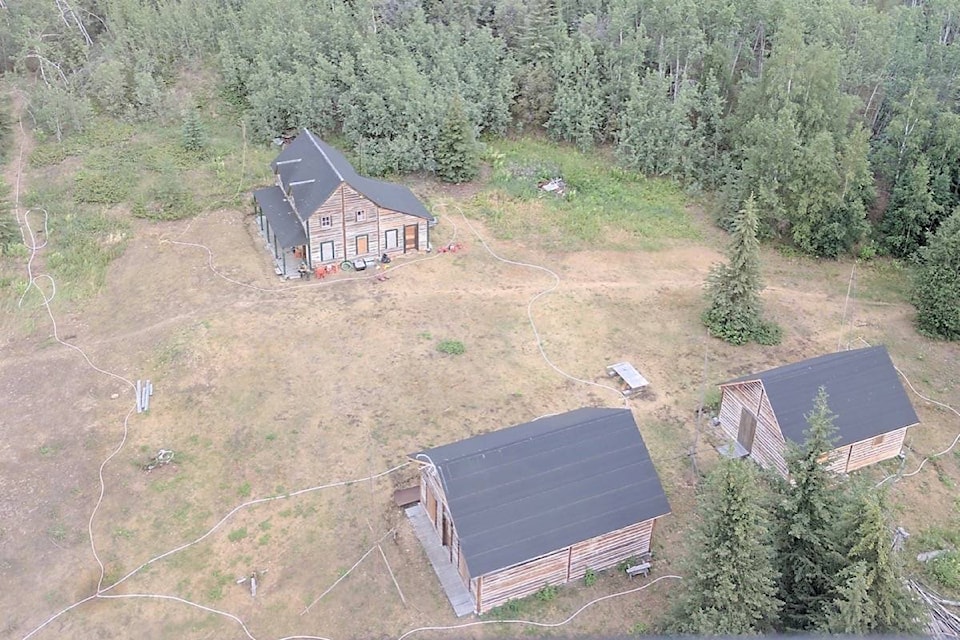Charles McLaren | Special to the News
I am writing on behalf of the Interface Fire Volunteer Fire Department Working Group, an informal organization comprised primarily of the fire departments at Golden Horn, Mt. Lorne, Marsh Lake, Tagish, Ibex, Hootalinqua and Dawson City.
As fire first responders in our coverage areas, we are acutely aware of the potential for a small ignition source growing into a fire that sweeps through the valley, destroying all in its path. Our primary role is as structural firefighters, but every house, shed or car fire is that possible source that starts a larger wildfire (this is what we mean by the term “interface fire”). Due to proximity, we are typically first on the scene at brush fires as well, ceding to Yukon Wildland Fire Management when they arrive.
An incident in Golden Horn last year drove home the fact that several locations in our area are inaccessible by fire response vehicles and crews, and we could not have a prompt, or possibly any, response, leaving a home to burn unchecked, and igniting the forest. Your local fire departments have long been aware of this, but on that occasion, something snapped. Thus the creation of the Interface Fire VFD Working Group.
We have been approaching the Yukon government since last fall, trying to initiate a discussion and determine if there is a larger plan for both prevention and response. As far as we can tell, the short answer is no.
At our request, the annual fire service chiefs conference agenda was changed so the afternoon discussion included the issue. The result was essentially confirmation that little has been done, and that what has been done hasn’t been shared or coordinated between agencies, and may be outdated. We asked that what plans are available be distributed, and that consideration be given to spring joint training exercises. This hasn’t been done.
Since the beginning of our initiative, we have suggested that an umbrella working group be formed of all parties that will need to be involved. That seems like a logical first step, and it’s not happening either.
There are two main routes to attempting to mitigate a major interface fire. The first is preventative planning. We’re too late for that in most regards. Poor planning has led to long dead-end roads (Tagish, Robinson, Triple C, Takhini River Road side roads, and more), poor access (lots behind lots, no enforcement of access standards), illegal and poorly built cabins, and many others.
Fire Smart, where clearing crews remove underbrush and thin out trees to help slow the spread of potential fire, helps reduce the risk. But correcting some of the gross planning problems has at least a 50-year horizon. This work needs to be done. Can we assume we’ll be lucky for 50 years?
The second is ensuring a fast, coordinated, efficient response. A small fire is one that can be managed before it becomes unstoppable. This requires quickly finding the location, decent access, and other factors. This is the initiative that we need to be working on starting now. The Yukon doesn’t have the resources that Fort McMurray or larger jurisdictions do, so we need to hit the fire hard and fast.
The government has mentioned that their plan is to call in the army. So, untrained fire fighters arriving without equipment to a jurisdiction that doesn’t have a lot of resources, about two days after the fire has swept through Whitehorse or Dawson? We should be able to do better than that.
This has been an issue for several months. We’ve sent numerous letters to government without seeing much in the way of response. The VFD Group has been trying to initiate action on this matter and have been largely ignored or fed platitudes. That’s a poor way to treat volunteers who are the front line of defence and are offering help on a crucial safety matter. We should be able to do better than that.
Make your own efforts to prevent fire at home. Clear more trees, because if you don’t the wildfire will do it for you. Burn safely. Consider whether a large truck in a hurry can make it down that narrow, twisty, steep driveway with no turnaround at the end. Be harsh with your evaluation, because in an emergency, agencies will do triage. If your place doesn’t look like it can be saved, it won’t be.
Consider how your insurance company will react if you claim you have fire department coverage, but we can’t find or get to you. And even if you live in downtown Whitehorse, don’t think that provides protection. A wildfire will reach you.
Join your local volunteer fire department. We need you now, and if The Big One happens, we’re going to all need each other.
As members of your local communities, area fire chiefs believe that there is a groundswell of public opinion supporting this issue. If you’re concerned, write your MLA. Show you care about protecting yourself, your home, your neighbours and your communities. At present, this is not a priority for government. Make it one.
Charles McLaren is the chief of the Golden Horn Volunteer Fire Department
